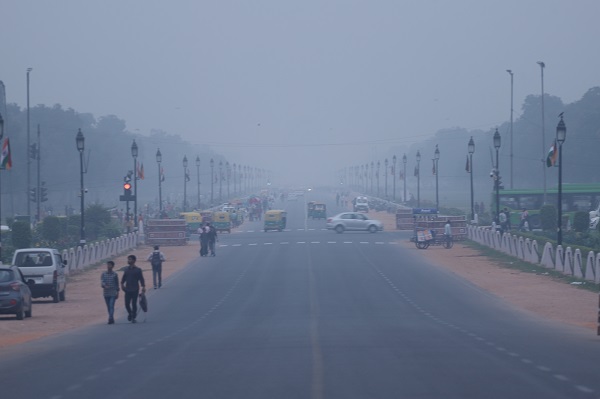New Delhi, Delhi’s air quality index (AQI) has turned hazardous with thick haze covering the city and the AQI index shooting up sharply on Tuesday evening.
As per US Embassy figures, the AQI count for pollutant PM 2.5 is 350 on Tuesday evening. AQI values over 300 trigger health warnings of emergency conditions. The entire population is even more likely to be affected by serious health effects, according to the advisory.
Though the AQI had moderated in the morning, it worsened in the afternoon around 1 p.m. and hit a peak score of 355 at 4 p.m., as per US Embassy data.
Post Diwali, the Delhi NCR region has been choked by high pollution levels after bursting of firecrackers.
According to a forecast by Safar India, the overall air quality of Delhi has improved as level of 24 hour averaged value of lead pollutant (PM2.5) returned back to below 250 early Tuesday morning that is defined as “Very Poor”, as forecast.
As indicated in extended range SAFAR forecast, the overall pollution level during Diwali period of current year (2019) was found to be better than past three years. Boundary layer winds speed helped to flush out additional load of Monday night.
Safar India said that as of Tuesday, the stubble plume from northwest regions has become one of the significant factors in deteriorating Delhi’s air quality. As evident from SAFAR multi-satellite fire product, effective stubble fire counts of Haryana and Punjab have increased from 1,654 to 2,577 during the past 24 hours after showing a noticeable dip on October 27.
According to the forecast, an increased stubble fire count alone won’t affect Delhi’s air quality unless meteorological conditions (in particular wind direction towards Delhi and its speed along with ventilation potential locally) are favorable for intrusion.
On Tuesday, the transport level wind direction is northwesterly and hence favourable for plume transport and as per SAFAR-model, the stubble share may touch this year’s peak value of 29 per cent on Wednesday.
Surface winds are not stagnant since Monday and flushing out pollutants but they are likely to be slowing down during stable night hours, helping accumulation.
“AQI is forecasted to be in higher-end of very poor category for the next two days with few touching higher levels. An increase in boundary layer wind speed is expected by November 1 which is likely to bring improvement in AQI,” the forecast said.










